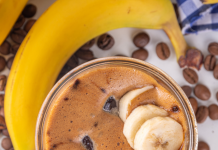Cuban coffee is a delicious, richly flavored brew that’s easy to make at home. If you’re new to this caffeinated beverage, don’t be intimidated by its strong flavor and dark color. Cuban coffee is a simple process with just a few ingredients that yields a delicious result.
History of Cuban Coffee
The coffee-growing industry came to Cuba in the mid-1700s. And by 1790, Spain started importing Cuban coffee beans in significant amounts. When French coffee farmers moved to Cuba, the country’s coffee bean industry grew. By the early 1950s, coffee bean exports totaled 20,000 tons—more than sugar exports.
The Cuban government nationalized coffee farms in 1956, and this began a decline in Cuban coffee production. Production continued to drop through the 1960s and 1970s but surged again in the late 1970s and into the 1980s.
The Cuban coffee industry suffered greatly during the 1990s when the USSR collapsed.
Where Does Cuban Coffee Grow?
The Sierra Maestra Mountains in eastern Cuba are home to one of the island’s most important coffee-growing regions. This is where coffee is cultivated without the use of chemical fertilizers and pesticides. It gives Cuban coffee a bona fide reputation for quality.
The coffee-growing towns of the Sierra Maestra Mountains have a history of cultivating coffee by hand. Farmers pick the coffee cherries from the trees and carry them in sacks on their shoulders to drying areas. They then transport the dried beans to nearby cities for export.
Another important coffee-growing region is the Escambray Mountains in central Cuba. There are huge coffee farms in Guaniguanico and East around Nipe and Sagua-Baracoa.
How to Make Cuban Coffee
Cuban coffee is brewed in a unique way to produce a dark, richly flavored cup of coffee. Cuban-style roasted beans are steeped for just a few minutes before being strained through a fine mesh cloth to remove any grounds. The result is an incredibly strong brew that isn’t bitter at all. And because it’s so strong, you can drink it black—no milk needed!
Ingredients
- Espresso ground coffee
- Sugar
Instructions
- To make cafecito, start by using a good quality dark roast coffee bean and place 1/2 tablespoon worth into your French press or any other brewing device.
- Add water up to the top of your cup and give it a good stir!
- Once the grounds have been fully soaked, put on your timer for 2 minutes. This should give you plenty of time for all that caffeine goodness to seep into every last drop of liquid without burning off too quickly or leaving behind any bitter residue.
- Meanwhile, fill the creamer cup with enough sugar to sweeten your cafecito.
- When you are ready to make your espresso shot, add a couple drops of espresso to a small cup containing sugar. Lift out the cup and place an empty cup directly beneath it to pour out the remaining espresso.
- Stir the drops of water and sugar together swiftly until you form a thick foam.
- Pour the espumita gently over your finished espresso shot and gently stir together until it is fully combined. Enjoy!
What’s So Special about Cuban Coffee?
The unique flavor of a Cafecito comes from the heat of the first drips of espresso coffee mixed with hydrolyzed sucrose (sugar water).
Some people like to start with a small amount of espresso and stir it thoroughly, making a light brown paste. Then you add the remaining espresso, and you get an “espumita,” or a light brown foamy layer sitting atop your beverage.
Conclusion
Cuban coffee is distinct from other coffee brews. You have to brew ground beans for an extended period. This results in a strong flavor and thick foam that looks like an espresso. It’s delicious, served hot or cold with sugar, cinnamon, and even ice cubes. If you love coffee as much as I do, don’t forget to try out this recipe today!







